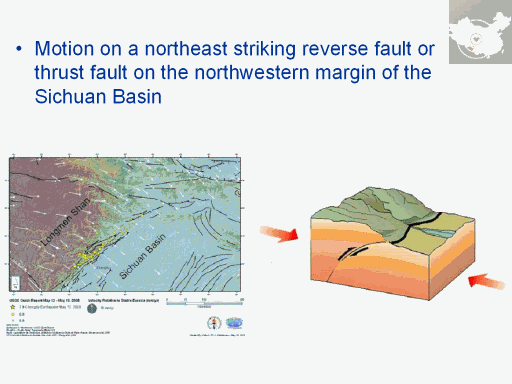| front |1 |2 |3 |4 |5 |6 |7 |8 |9 |10 |11 |12 |13 |14 |15 |16 |17 |18 |19 |20 |21 |22 |23 |24 |25 |26 |27 |28 |29 |30 |31 |32 |33 |34 |35 |36 |37 |38 |39 |review |
 |
Tectonic Summary (Ref: USGS) The Sichuan earthquake of May 12, 2008, occurred as the result of motion on a northeast striking reverse fault or thrust fault on the northwestern margin of the Sichuan Basin. The earthquake's epicenter and focal-mechanism are consistent with it having occurred as the result of movement on the Longmenshan fault or a tectonically related fault. The earthquake reflects tectonic stresses resulting from the convergence of crustal material slowly moving from the high Tibetan Plateau, to the west, against strong crust underlying the Sichuan Basin and southeastern China. On a continental scale, the seismicity of central and eastern Asia is a result of northward convergence of the India plate against the Eurasia plate with a velocity of about 50 mm/y. The convergence of the two plates is broadly accommodated by the uplift of the Asian highlands and by the motion of crustal material to the east away from the uplifted Tibetan Plateau. Source of image: Tectonic Observatories, http://www.tectonics.caltech.edu/2008MayChinaEQ/xichuan.html |